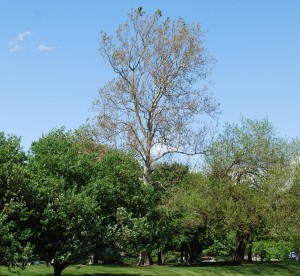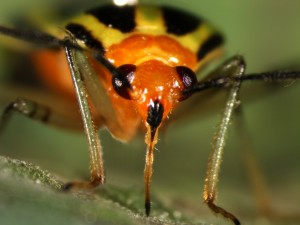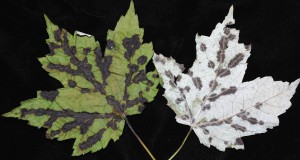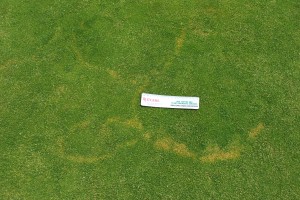Have you noticed in the landscape that the sycamores, and to a lesser degree, the plane trees are devoid of leaves? Anthracnose of Platanus species is a well known disease in our area. The disease causes leaf and shoot blight, twig cankers, and branch dieback, and has been particularly severe this spring.
Bizzaro World Turfgrass Edition
The fungus Epichloë typhina, several other species of Epichloë, and the closely related asexual species of form genus Neotyphodium, are symbionts of cool-season grasses, which are known as “endophytes.”
Now You See Me, Now You Don’t
Four-lined plant bugs are tearing up in the home landscape this week. This true bug feeds on more than 250 mostly herbaceous and small woody ornamental plants. Like Jack Reacher, they are alert, quick, and difficult to detect.
Seeing Red, Feeling Blue?
Red thread has been festering in turfgrass for some weeks now, but really blew up over the last few days. As long as there is plenty of moisture – light rain, heavy fogs, dew – and optimal temperatures (60ºF to- 75ºF) – the fungus that causes red thread, Laetisaria fuciformis, will tear up susceptible grasses.
Blister in the Sun
Leaf blister on maple? You say no way, leaf blister only gets on oak… A foliar disease that looks very much like anthracnose has appeared on area red maples in the last few days.
Brown Ring Patch
Several samples of brown ring patch found their way into the Plant Diagnostic Laboratory this week. Sometimes confused with take-all, fairy ring, or yellow patch, this relatively newly described malady of Poa annua putting greens is caused by the fungus Waitea circinata.






